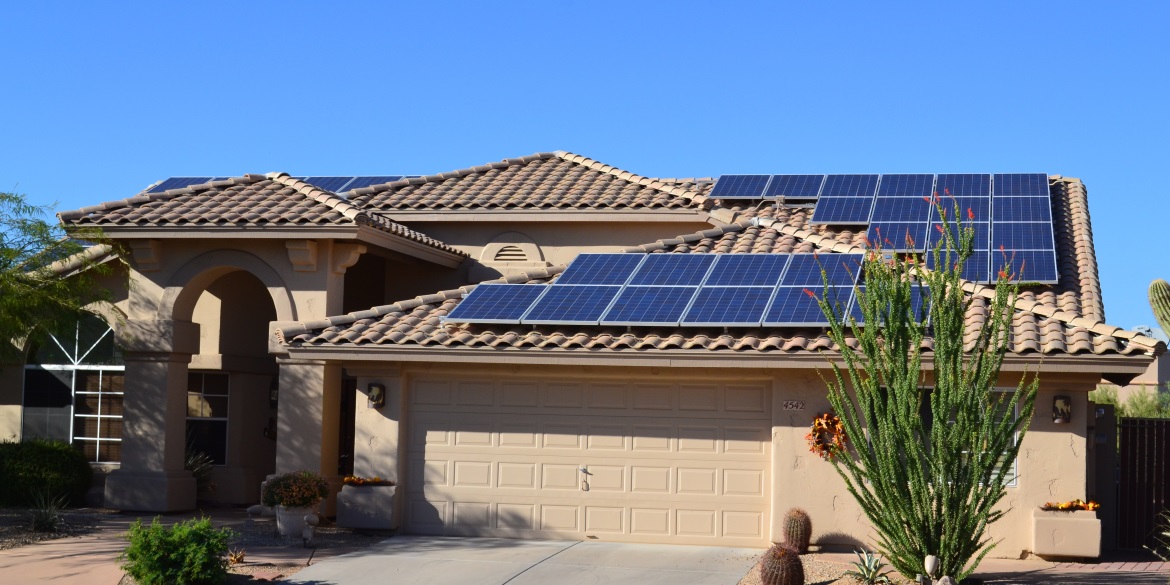As solar has gained popularity, some utilities are getting into the business by offering residential customers utility-owned solar. This is often a good option for homeowners who want to save money on their utility bills with minimal out-of-pocket costs and freedom from maintenance worries.
Utilities also benefit from owning distributed solar resources, which become part of their renewable generation portfolios. Owning distributed PV resources enables utilities to better manage grid reliability by giving them control over where the systems are located, how they are oriented and what services the inverter supplies.
Utilities seeking to implement these programs face new administrative challenges, however. This was the case for Tucson Electric Power (TEP), which obtained approval from the Arizona Corporation Commission (ACC) in late 2014 to launch a utility-owned residential solar program. When TEP began the hard work of figuring out how to implement its new TEP-owned Residential Solar Program, they quickly realized they were now playing the part of administrator, applicant and project manager, and that they needed a tool to manage the program efficiently and effectively.
TEP selected PowerClerk® to manage each project, from customer application through installation. TEP processes Residential Solar Program applications completely online with a streamlined process that takes full advantage of a wide range of PowerClerk features including eSignatures, automatic communications, automatic deadlines and more to efficiently manage each installation.
TEP’s Residential Solar Program
TEP’s Residential Solar Program is aimed at making solar affordable for all utility customers while minimizing the shifting of infrastructure costs to non-solar customers, a common concern with net metering. In the TEP program, participants pay an upfront $250 fee to guarantee a fixed energy bill for up to 25 years based on their historical consumption, provided their future consumption doesn’t vary by more than 15%.
The program was designed to add solar to the TEP portfolio in 3.5 MW blocks (roughly 500 customers each), and in July 2015, TEP applied to add another 1,000 rooftops to the program. Customers interested in the program fill out a form on the TEP website. Selected participants are then validated by TEP prior to installation kick-off. One of three local solar companies chosen by TEP installs and maintains the PV systems in the utility-owned solar program.
Unique requirements for managing utility-owned solar
One way in which TEP’s Residential Solar Program differs from non-utility-owned solar interconnection programs is that homeowners have more direct contact with the utility. As the owner of the PV systems, TEP is “selling” the idea of going solar to their customers, a function typically handled by installers. TEP also assigns each project to an installer and tracks project progress. As a result, the workflow, application and associated forms required to manage TEP’s Residential Solar Program are substantially different from a “traditional” interconnection program.
TEP needed a business process management platform that could accommodate these unique factors. The flexible, intuitive program design tools in PowerClerk enabled TEP administrators to quickly evaluate different program configurations (i.e., structure and relationship of forms, roles and workflow), and share different iterations with management during the development process.
Using PowerClerk, TEP is able to automatically notify installers and their customers when a project’s status is updated. Contracts are signed electronically online, eliminating the need for paper contracts to be physically ferried back and forth between the utility and the property owner. Also, by housing all of the project data in PowerClerk, TEP can easily report across all the PV systems in the program. As the scope of the Residential Solar Program continues to grow and evolve, TEP will have the ability to evolve the program in PowerClerk and stay on top of any new requirements.
Flexible platform for an evolving solar market
Since 2006, PowerClerk has successfully supported a range of customers, including investor-owned utilities, municipal utilities, state agencies and energy agencies. This diverse customer community is running a variety of programs, including distributed generation incentives, tax credits, customer- and third-party-owned interconnection, and now utility-owned interconnection.
We’re passionate about supporting innovative programs like this one that challenge conventional thinking around solar ownership while lowering barriers to entry for rooftop solar participants. Change will continue to greet this industry, and with it will come new challenges to be met and overcome for contractors, utilities and their customers.
Contact Us to learn more about PowerClerk.
